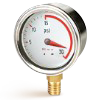- Aboveground crossing
- Accident
- Aeration tank
- Aggressive (corrosive) water
- Air cooler
- Arctic pipelines
- Associated petroleum gas
- Back-stripping analysis
- Barbotage
- Barrage
- Barrel
- Bio-indication
- Bottomhole zone
- Box-and-pin joint (tool joint)
- Carbon black
- Casing string
- Catagenesis of organic substance
- Cavernosity
- Clogging
- Column equipment
- Comprehensive gas treatment unit
- Compressed natural gas filling stations
- Compressing
- Compressor station
- Condensate recovery factor
- Connector
- Core sample
- Correlation
- Corrosion
- Cratering
- Directional drilling
- Distillation-based separation of multi-component fluids
- Diversification
- Drilling
- Drilling (penetration) rate
- Drilling rig
- Dry gas
- Expander
- Extreme anhydrous depression
- Failure in gas industry
- Field development techniques
- Fishing tool
- Flammability limit
- Flare unit
- Fluid
- Fluid dynamics
- Flushing out of well
- Fore deep
- Formation
- Formation pressure
- Formation testing
- Fossil (stratum, reservoir, formation) water
- Free (non-associated) gas
- Free-piston pumping
- Fuel equivalent
- Gas absorption
- Gas adsorption
- Gas cap
- Gas condensate fields
- Gas consumption rate
- Gas deposit water cut
- Gas desorption
- Gas disposition terminal
- Gas distribution network
- Gas distribution plant (GDP)
- Gas engines
- Gas hydrates
- Gas hydrates self-conservation
- Gas interchangeability
- Gas jet ejector
- Gas linepipe
- Gas macrojamming
- Gas processing plant
- Gas separation
- Gas stripping
- Gas supply to consumers
- Gas throttling
- Gas tongue
- Gas transmission system
- Gas trunkline
- Gas-water contact (GWC)
- Gasholder
- Geological exploration risk
- Geological formation
- Geological prospecting
- Gravity exploration
- Greenhouse gases
- Helium
- Horizon
- Hydraulic fracturing
- Hydrocarbons
- Hydrogen index (pH)
- Hydrogenation
- Injection capacity of a well
- Kharasaveyskoye field
- Kovykta field
- Lateral coning
- Lift string
- Line pipe operation center
- Liquefied natural gas
- Lithology
- Logging
- Long-distance gas transmission
- Looping
- Low-temperature separation of gas
- Magnetic prospecting
- Main gas generation phase (MGGP)
- Main oil generation phase (MOGP)
- Medvezhye field
- Membrane technology
- Methane
- Methanol
- Mobile CNG station
- Mofettes
- Natural gas dew point
- Natural gas production
- Natural gas purification
- Natural gas vehicles (NGV)
- Natural pressure gas lift operation
- Natural reservoir
- Octane rating
- Odorant
- Offshore fields exploration
- Oil and gas formation
- Oil and gas reservoir
- Oil rim
- Oil-water contact (OWC)
- Oil/gas blowout
- Orenburg helium refinery
- Packer
- Pad distribution
- Passivization
- Phase
- Phase transitions of hydrocarbon gases
- Pipelaying vessel
- Pipeline accessories (valves and fittings)
- Pipeline route
- Pipeline watercourse
- Pipelines ballasting
- Plugging material (backfill)
- Preventer (blow-out equipment, BOE)
- Producing (pay) horizon
- Prospective resources
- Raw gas
- Reamer
- Regasification
- Repression funnel
- Reserves
- Reserves-to-Production Ratio (RPR)
- Reservoir depression
- Reservoir energy
- Reservoir gas of condensate accumulations
- Reservoir impermeable seal
- Reservoir temperature
- Retrograde phenomena
- Riser string
- Rock gas saturation
- Satellite soils monitoring
- Secondary (enhanced) recovery methods
- Seismic exploration
- Skin-effect
- Sorption
- Spot trading
- Stabilized condensate
- Standard conditions
- Stray currents
- Subsurface use licensing
- Swivel
- Synthesis gas
- Take-or-pay
- Tubing string
- Unified Gas Supply System
- Unstabilized condensate
- Viscosity
- Well
- Well cementing
- Well deviation
- Well recompletion
- Well stock
- Well suspension
- Wellhead pressure
- Western Siberia oil and gas bearing province
- Working gas
- Zapolyarnoye field
In the former USSR first CNG filling stations were constructed in 1939 in Melitopol, Gorlovka and Moscow. 30 high-capacity CNG filling stations supplying about 40 thousand vehicles with gas were constructed in the 1950s.
Unlike petrol and gas filling stations which only sell motor fuels, CNG filling stations are facilities where natural gas delivered via gas pipelines goes through comprehensive processing.
The CNG filling stations workflow includes:
- feed gas purification of liquids and mechanical impurities in a flash separator and filters;
- commercial gas metering;
- compression up to 25 MPa with refrigeration after each compression stage;
- gas dehydration in a dehydration unit;
- storage in batteries at the pressure of 25 MPa and distribution through gas dispensers at the pressure of 20 MPa.
A network of CNG filling stations is formed on the basis of standard vehicle series. More than 200 CNG filling stations were operational in Russia by the beginning of 2000. The network basically hinges on high capacity stations rated at 500 and 250 nominal refills per day.
A network of CNG filling stations includes:
- stationary AGNKS-500 stations (the figure determines the number of motor truck refills per day) which are designed for 0.4 to 0.6 MPa and 0.6 to 1.2 MPa inlet pressures;
- skid-mounted container-type AGNKS-250 stations;
- modular skid-mounted container-type AGNKS-125, garage CNG filling stations AGNKS-75;
- individual filling stations, etc.
– a sole operator company focused on expanding the use of natural gas as a vehicle fuel


